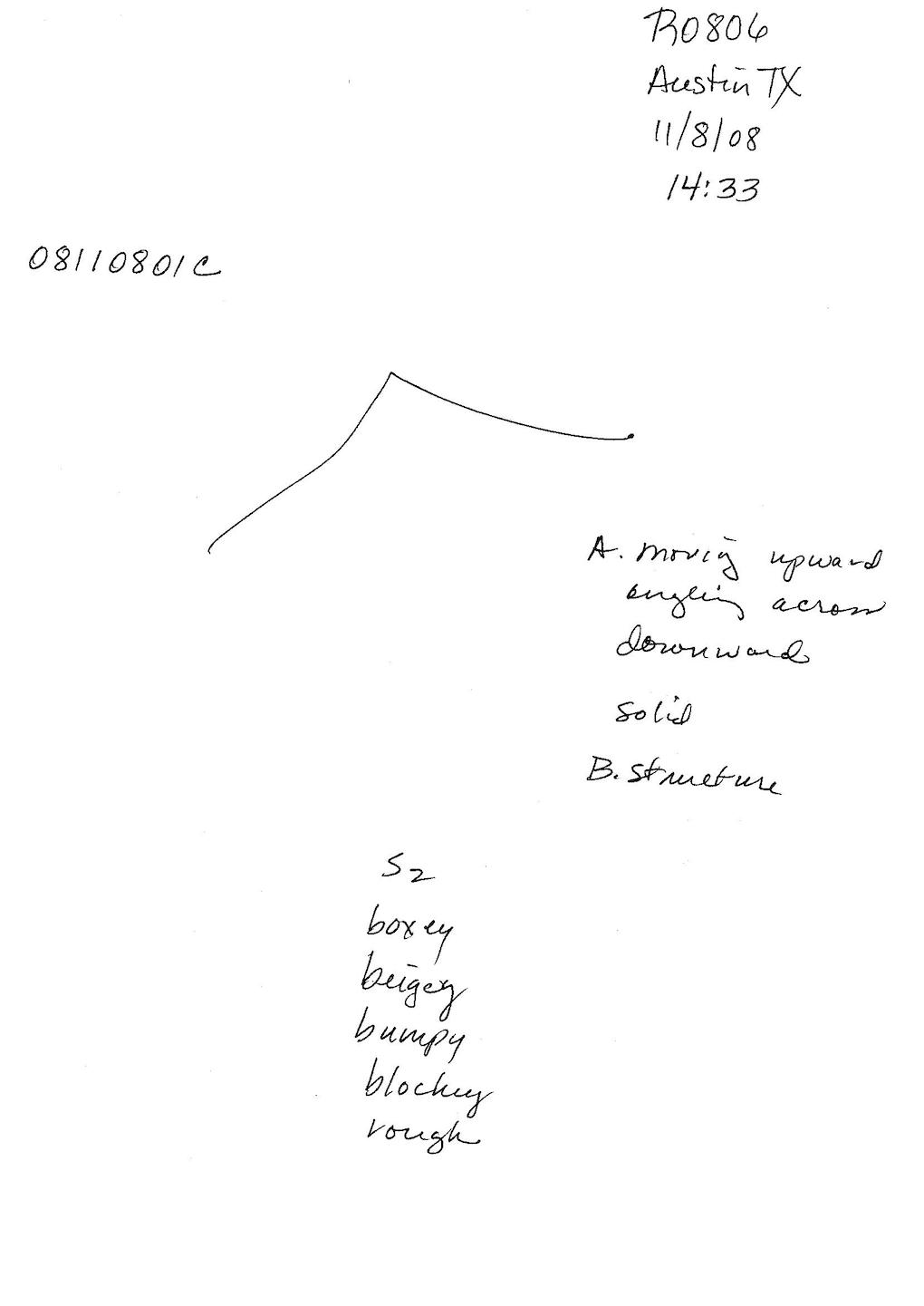Methodologies
A Map of Remote Viewing Methodologies
Daz Smith (from remotedviewed.com) has put together a diagram of how the methodologies and key names associated with them are related.
The map can also be viewed as a historical view of remote viewing from the early Stanford Research Institute (SRI) period to the proliferation of practitioners after the disclosure of the ‘Star Gate’ program.
IRVA does not endorse any of the names or methodologies depicted on the map or described below.
Controlled Remote Viewing

CRV is based on the notion that one does not train someone to be “psychic,” but rather teaches a person to “expand the parameters” of his or her perceptions, as Swann puts it. Information obtained through CRV is carried to the viewer on a theorized “signal line” which the viewer’s subconscious detects. The goal of CRV is to facilitate the transfer of information from the viewer’s subconscious, across the threshold of awareness, and into waking consciousness, where it can be “decoded” into a form the viewer can express intelligibly. Viewers are trained how to deal with–in other words, control–the mental “noise” encountered in the course of the remote viewing session.
To implement this process, CRV is structured as a set of formal stages which correspond to the progressively deeper levels of awareness the viewer goes through as he or she gains ever greater contact with the RV signal line. A typical description of these stages is as follows:
- Stage 1. Perception of basic, overall nature of the site or target (usually referred to as the “major
gestalt”). Examples of these major gestalts might be “land,” “structure,” “water,” “event,” etc. - Stage 2. Basic sensory perceptions–tastes, sounds, colors, qualities of light, textures, temperatures, etc.
- Stage 3. Perception of the site’s or target’s dimensional qualities–i.e., height, breadth, width, depth,
angularity, curvature, density, etc. Sketching of viewer perceptions is an important aspect of this stage. - Stage 4. Perception of increasingly complex and abstract perceptions about the site or target.
- Stage 5. “Interrogation” of the signal line. Allows details of the target to be more fully explored.
- Stage 6. Allows further sketching and three-dimensional modeling or sculpting of aspects of the site or
target, while acquiring further qualitative information.
Various derivatives of the original Swann/Puthoff methodology, such as Technical Remote Viewing (TRV) and Scientific Remote Viewing (SRV), have re-ordered some of the stages, made alterations to some of the content, and introduced changes in the vocabulary originally adopted by SRI. However, the overall intent of each of these derivatives remains the same as the original version of CRV.
Extended Remote Viewing
 In Extended Remote Viewing, or ERV for short, a viewer relaxes on a bed or other comfortable support and tries to reach a ‘hypnagogic’ state – a condition at the borderline between asleep and awake. The room is darkened and soundproofed if possible.
In Extended Remote Viewing, or ERV for short, a viewer relaxes on a bed or other comfortable support and tries to reach a ‘hypnagogic’ state – a condition at the borderline between asleep and awake. The room is darkened and soundproofed if possible.
As the viewer reaches the edge of consciousness, a second person in the room, the monitor, begins the session with a tasking, that is directions to the viewer to access the desired target. Once the viewer can describe elements of the correct target, the monitor quietly poses questions about the target. These questions may request details, purpose, appearance, construction, activities, or other target-related information. The monitor records or writes down the answers the viewer provides. After the session the viewer makes additional notes about what was perceived, along with appropriate sketches or drawings.
The theory behind ERV is that, given the likelihood that remote viewing impressions bubble up from the subconscious,then deliberately approaching an unconscious state should make it easier to detect these impressions with less mentalnoise. (In reality, this noise does not seem any less in ERV than it does in other remote viewing methods.)
The term ERV was originally coined by Capt. F. Holmes “Skip” Atwater while he was operations and training officer for the
Army’s remote viewing unit at Ft. Meade, MD. ERV existed before its name did, and was used by some of the first military viewers.
Because an ERV session took longer than did a CRV one, Skip decided to call it “extended” RV, and the name stuck. He later went on to direct research at the Monroe Institute in the development of Hemi-Sync™ technology; a way of augmenting ERV through the application of synchronized tones administered to the viewer through headphones.
HRVG Methodology
 With aspects familiar to CRV and ERV practitioners alike, the Hawaii Remote Viewers’ Guild (HRVG) methodology is described by HRVG President, Glenn Wheaton, as a 1980’s collaboration between the US Army Special Forces and famed psychic Dr. Richard Ireland.
With aspects familiar to CRV and ERV practitioners alike, the Hawaii Remote Viewers’ Guild (HRVG) methodology is described by HRVG President, Glenn Wheaton, as a 1980’s collaboration between the US Army Special Forces and famed psychic Dr. Richard Ireland.
The methodology is an integration of Neuro-linguistic Programming (NLP) and a US Army intelligence “SALUTE” (size, activity, location,
unit, time, equipment, remarks) reporting format. While highly structured, the methodology provides a versatile platform from which the remote viewer can transition from an alert mental Beta wave collection state to a more relaxed experiential Theta wave extended remote viewing (ERV) state.
Viewers engage and train their subconscious to place target imagery as visuals in a notional area called “Blackboard.” Viewers also obtain other sensory and kinesthetic data in sequential order, using NLP techniques to facilitate communication with the subconscious.
The viewers begin a session in an alert Beta wave state, working the fast-paced, highly structured methodology. They perceive and identify the major gestalts at the target with an S-1 visual ideogram, move on to the collection of sensory data in S-2 using NLP techniques, and then assemble the data into an S-3 data consolidation or site sketch. As the session continues and target contact increases, viewers naturally move to an Alpha wave state for the S-4 information cascade and use of the “Blackboard.” With the longer dwell time allowed in an Alpha state, viewers examine each gestalt with more depth and clarity. By S-5 the viewers set aside pen and paper, do a cool-down technique to attain a state with more Theta brain waves, and go into monitored ERV.
The methodology includes a collection and reporting scheme that is conducive to the capture of visual data while remaining analytically friendly. The methodology includes temporal models for the determination of locations as well as timelines. Viewers are also taught three tiers of analytical appliqués for use in evaluating the results of their remote viewing efforts
.
‘Targ/Schwartz’ / Natural Remote Viewing
 Prior to the development of more structured methodologies, the remote viewer used a more free-style method often based on their own way of working with their psychic abilities.
Prior to the development of more structured methodologies, the remote viewer used a more free-style method often based on their own way of working with their psychic abilities.
Such free-style methods were used exclusively in the early days at SRI, and throughout the government-funded program, as well as operationally in the United States military and at Stephan Schwartz’ Mobius group. These approaches produced remote viewing’s early successes and were the basis for much of the research performed at SRI and the PEAR laboratories. Their use continues today at Ed May’s Laboratories for Fundamental Research (LFR).
Although the viewer is free to use their own methods and format of recording the session the following should be incorporated: open questioning that allows for free-response answers, sketching, the query of all senses, and importantly, a focus on target description and not identification, with a separation between responses believed to be psychic perceptions from those believed to be analysis and conjecture. Such personal approaches can be referred to as ‘remote viewing’ as long as the remote viewing protocols are met.
Joe McMoneagle, Russell Targ and Stephan Schwartz describe this style of remote viewing and the projects it was used in within their books. Schwartz and McMoneagle continue to teach it today.
Dream Remote Viewing
 Reports of precognitive information, ideas and creative inspiration coming from dreams are common. The dream state and the threshold states between being asleep and awake are natural times where the analytical processes are suppressed, providing a more receptive environment for creative and precognitive impressions to flourish.
Reports of precognitive information, ideas and creative inspiration coming from dreams are common. The dream state and the threshold states between being asleep and awake are natural times where the analytical processes are suppressed, providing a more receptive environment for creative and precognitive impressions to flourish.
To dream about a target, you will need to firmly establish that intention; writing the target number (or however the target has been specified, for example, ‘main photograph on tomorrow’s front page’) down and saying it to yourself several times during the day will help. This will inform your consciousness that you intend to dream about it. Once in bed, focus on the target as you fall asleep.
Dream impressions, images and sensations need to be recorded directly as you awaken. Moving around to any extent when you wake up will dislodge the memories of your dream, so ensure that you have the necessary materials to record your dreams by your bedside, ready, close at hand. The habit of recording your dreams, as you awake, will help with remembering them.
Associative Remote Viewing
 Associative Remote Viewing (ARV) is not a method, but an application of remote viewing used to predict the outcome of future events in situations where there are known possible outcomes, such as in sports competitions (i.e., win, lose or draw) and financial markets (e.g., up a little/up a lot/down a little/down a lot).
Associative Remote Viewing (ARV) is not a method, but an application of remote viewing used to predict the outcome of future events in situations where there are known possible outcomes, such as in sports competitions (i.e., win, lose or draw) and financial markets (e.g., up a little/up a lot/down a little/down a lot).
To use ARV each potential outcome needs to be associated (hence, ‘associative remote viewing’) with its own target, for example, if two outcomes are to be tested for next week’s stock price, e.g., will the stock go up or down, then two photographs would be required – one to represent each outcome. Photographs are generally used, but objects can be used as well. Before the time of the event the viewer is tasked with describing the picture they will be shown in the future (after the event).
An analyst/judge can use the remote viewer’s session to make a prediction based on a comparison between it and the pictures previously chosen and associated with the potential outcomes. The outcome associated with the picture that the viewer’s session most closely resembles is the prediction.
The feedback (the picture associated with the actual outcome) can only be shown to the viewer after the event.

